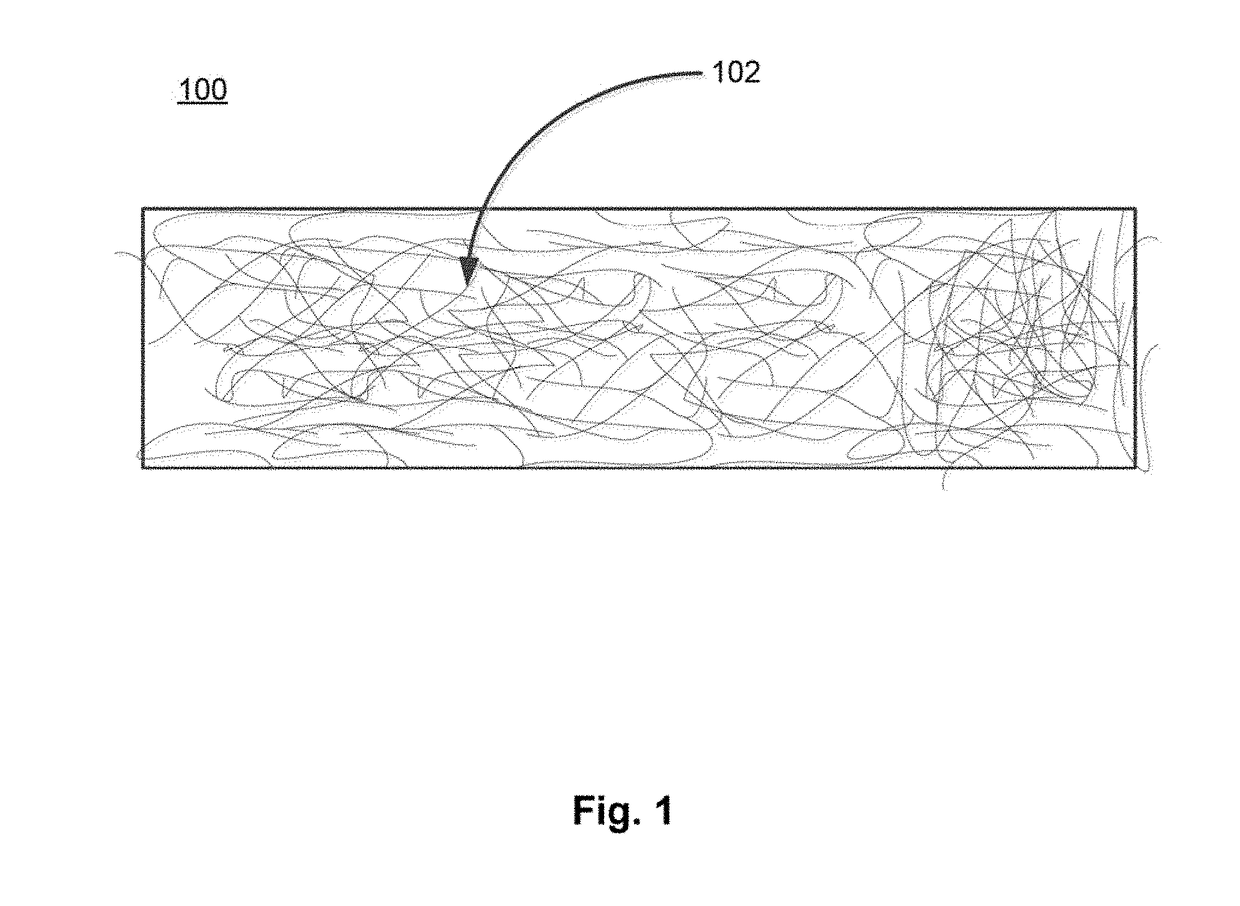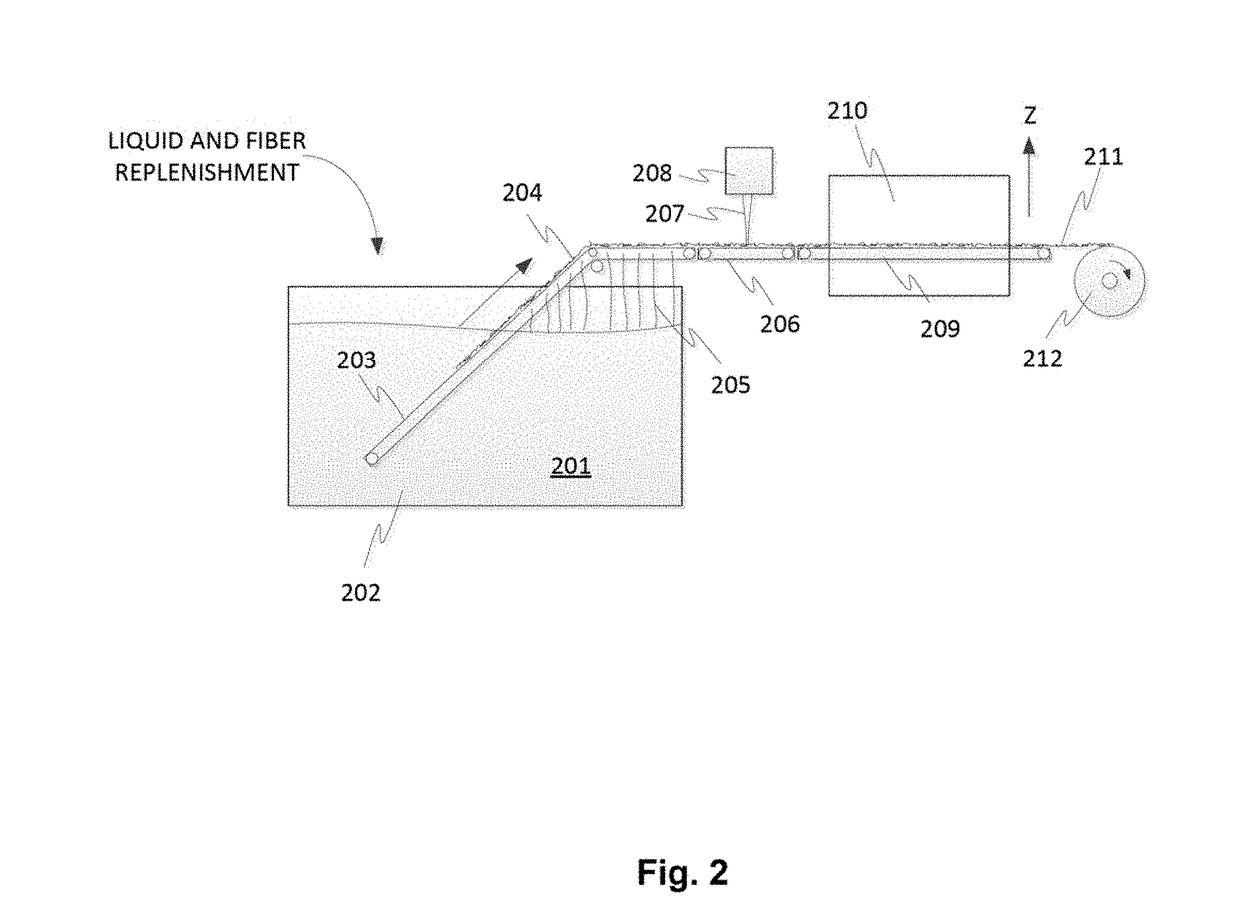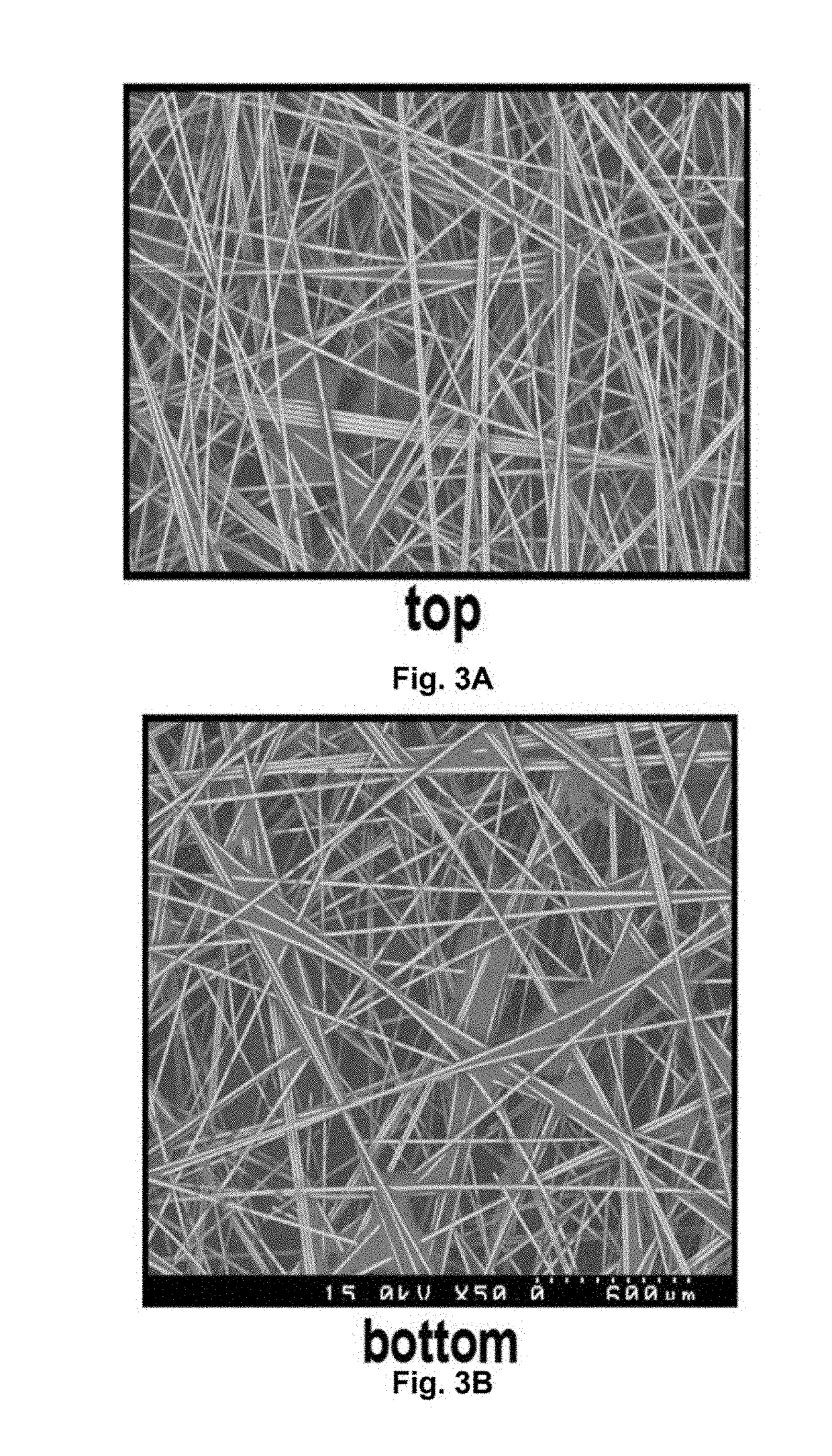Soy protein and carbohydrate containing binder compositions
a technology of soy protein and composition, which is applied in the field of soy protein and carbohydrate containing binder composition, can solve the problems of low hot/wet tensile strength, poor performance of glass mats made from soy protein binder compositions, and low total tensile strength, so as to improve the total tensile strength of the cured binder, and improve the total tensile strength
- Summary
- Abstract
- Description
- Claims
- Application Information
AI Technical Summary
Benefits of technology
Problems solved by technology
Method used
Image
Examples
examples
[0089]Loosely bonded top layers were observed in several glass fiber mats made using carbohydrate binder compositions that did not contain a soy protein or other thickening agents. FIGS. 3A and 3B show scanning electron microscope images of the top and bottom layers, respectively, of a glass fiber mat made with a carbohydrate-containing binder composition that did not contain soy or other thickening agents. The binder composition (“Binder 1”) included Glyoxal:Urea:Dextrose formulation having a molar ratio of 1:1:5, and further included 5 wt. % (NH4)2SO4+5 wt. % (NH4)2HPO4 as a catalyst. The binder composition was diluted to 18 wt. % solids in water.
[0090]The figures show that the bottom layer (FIG. 3B) has significantly more cured binder than the top layer (FIG. 3A). For a 2.1 lb / sq mat sample, the top and bottom layers were separated and measured for binder content (loss-on-ignition (LOI) percentage). The LOI was 8.9 wt. % for the top layer shown in FIG. 3A, 23.9 wt. % for the bott...
PUM
| Property | Measurement | Unit |
|---|---|---|
| wt. % | aaaaa | aaaaa |
| viscosity | aaaaa | aaaaa |
| viscosity | aaaaa | aaaaa |
Abstract
Description
Claims
Application Information
 Login to View More
Login to View More - R&D
- Intellectual Property
- Life Sciences
- Materials
- Tech Scout
- Unparalleled Data Quality
- Higher Quality Content
- 60% Fewer Hallucinations
Browse by: Latest US Patents, China's latest patents, Technical Efficacy Thesaurus, Application Domain, Technology Topic, Popular Technical Reports.
© 2025 PatSnap. All rights reserved.Legal|Privacy policy|Modern Slavery Act Transparency Statement|Sitemap|About US| Contact US: help@patsnap.com



